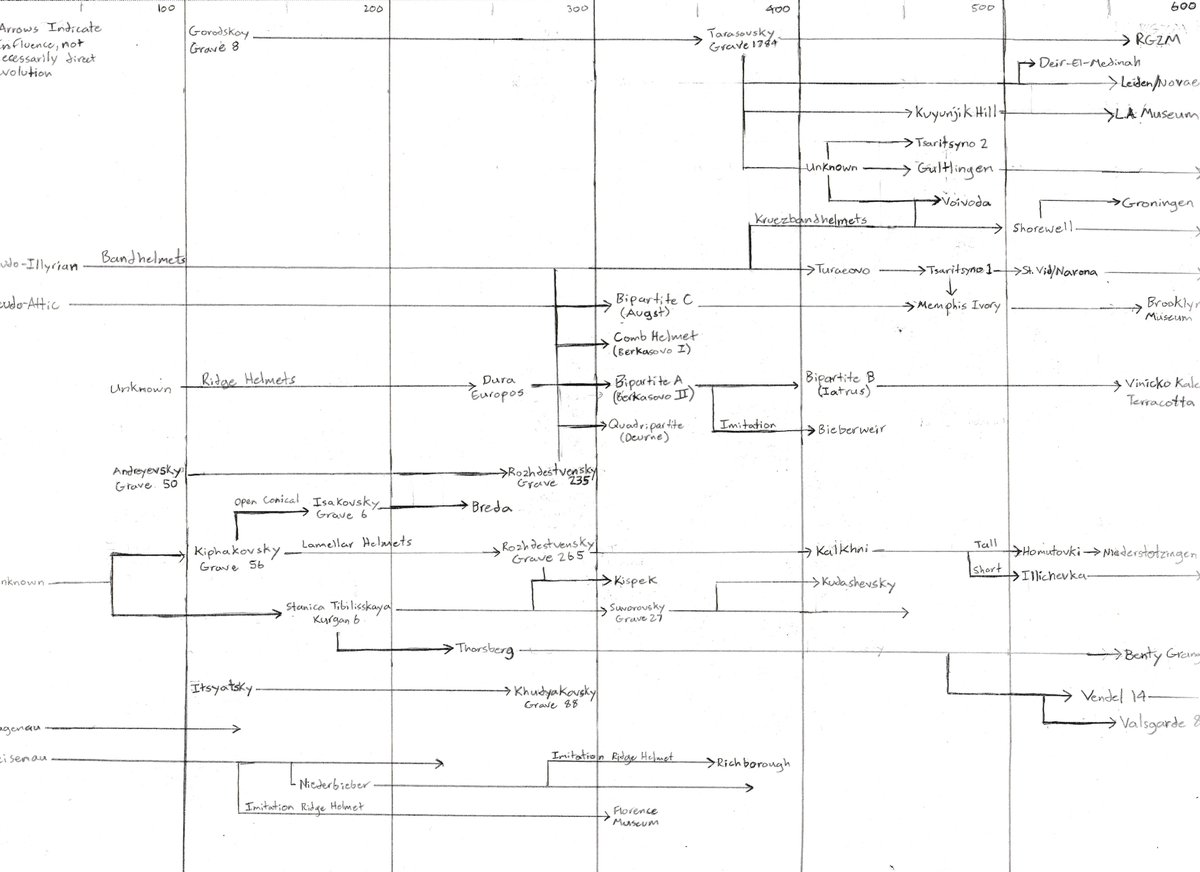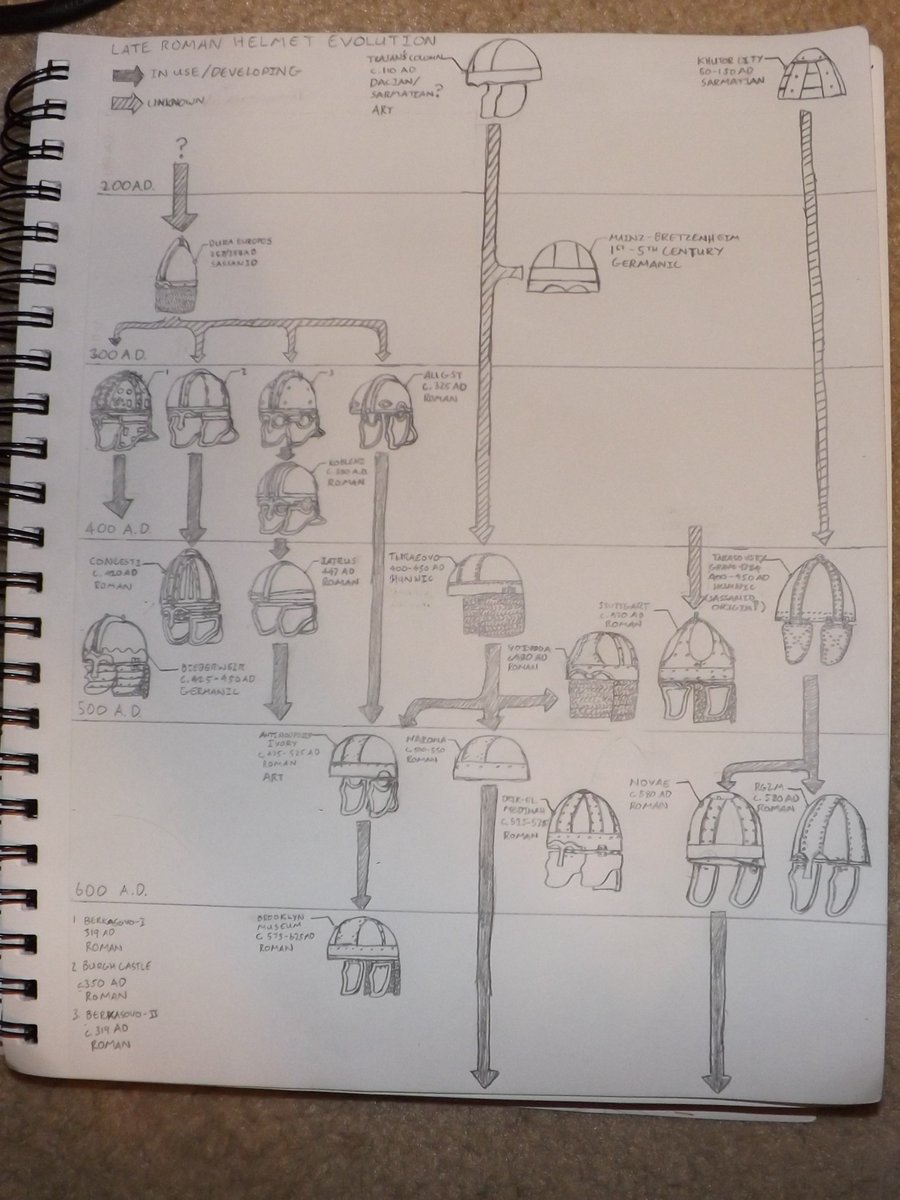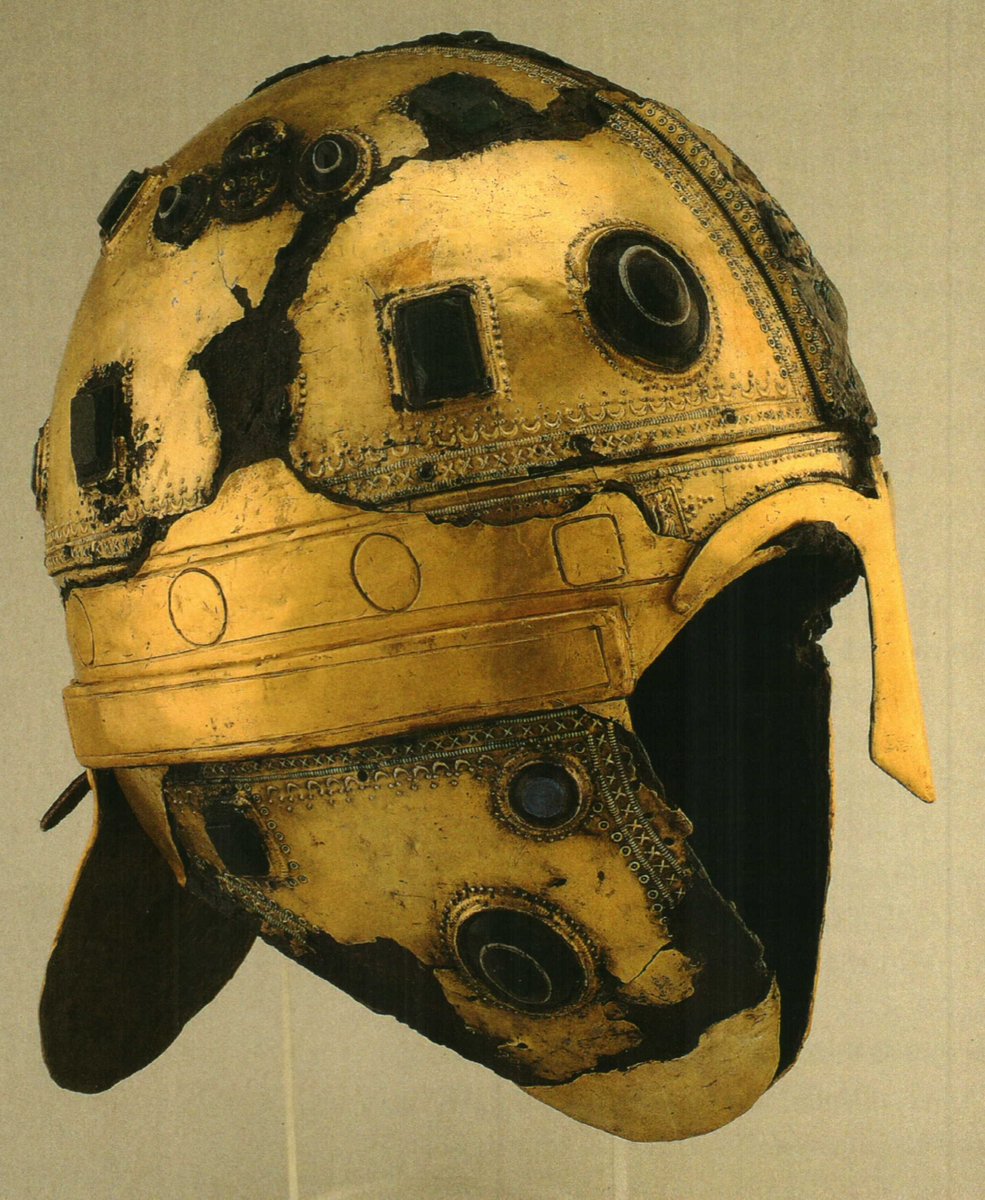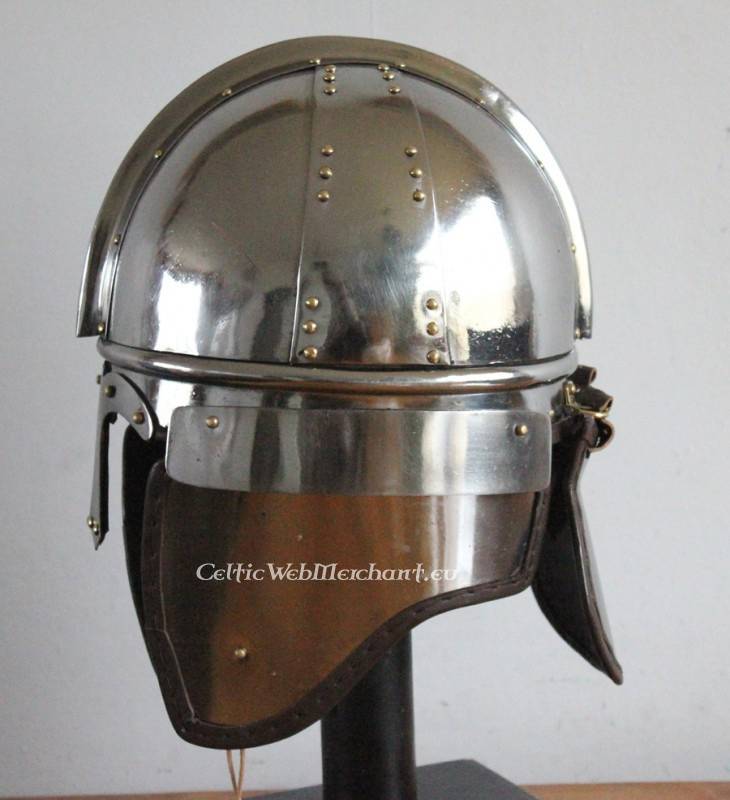
This one was also one I advised on. The only real inaccuracy, in this piece is the decoration on the tunic (which I recommended they either decorate the sleeves and tighten the cuffs or remove all decoration.) Every other piece here is datable to the 5th century.
https://twitter.com/DespertaFerro/status/1331945786557550592
The sword fittings are all from Nydam 1d, and although hourglass hilts (Behmer Type-V) are primarily a North/Baltic sea phenomenon, we have plenty of evidence for extensive recruitment from this region under Aetius.
The strap end is an Amphora-type, which are pretty common in the 4th-5th centuries. Bohme has a specific typology breaking them down, with the one here being based on an example from Lauriacum.
The boots come from Antinoe/Antinoupolis, called hypodemata, zankai or melanpedila. In Latin they were probably called zancae or cothurni, but the terminology is sketchy.
*Note that zankai/zancae is not the same word as the tzangia/tzaggia used by the emperors.
*Note that zankai/zancae is not the same word as the tzangia/tzaggia used by the emperors.
The brooch isn't heavily detailed in the painting but can probably be interpreted as a Type-3/4 or Type 5ii, both of which have examples which range as late as 415 in date. I told them to go with a Type-6ii, but, well, I can't force them, only make recommendations.
The horse trappings are all based on Hunnic finds, including the saddle, as high-backed steppe saddles were being introduced in the late 4th century and replacing the four-horned saddle. Finds from Budapest I-III (c. 380-455 AD) were the examples used for the horse trappings.
The helmet is a reasonable extrapolation of some of the helmets from Koblenz, dated to c. 380 AD, in North France. We have evidence for the continued use of ridge helmets into at least the late 6th century, & derivative forms dating to the 9th-10th century from Bojna and Prague.
All in all, one could put a rather safe date of this figure of about 380 to 415, tending towards the latter (400-415). So an solid representation of an early 5th century equites.
If I were to push this figure into the later mid-5th century, the only big changes I'd make would be to the scabbard fittings, and I'd readily define the fibula as a Type-V. That particular amphora-type strap end visible is fine for mid-5th century, they last quite some time.
• • •
Missing some Tweet in this thread? You can try to
force a refresh














